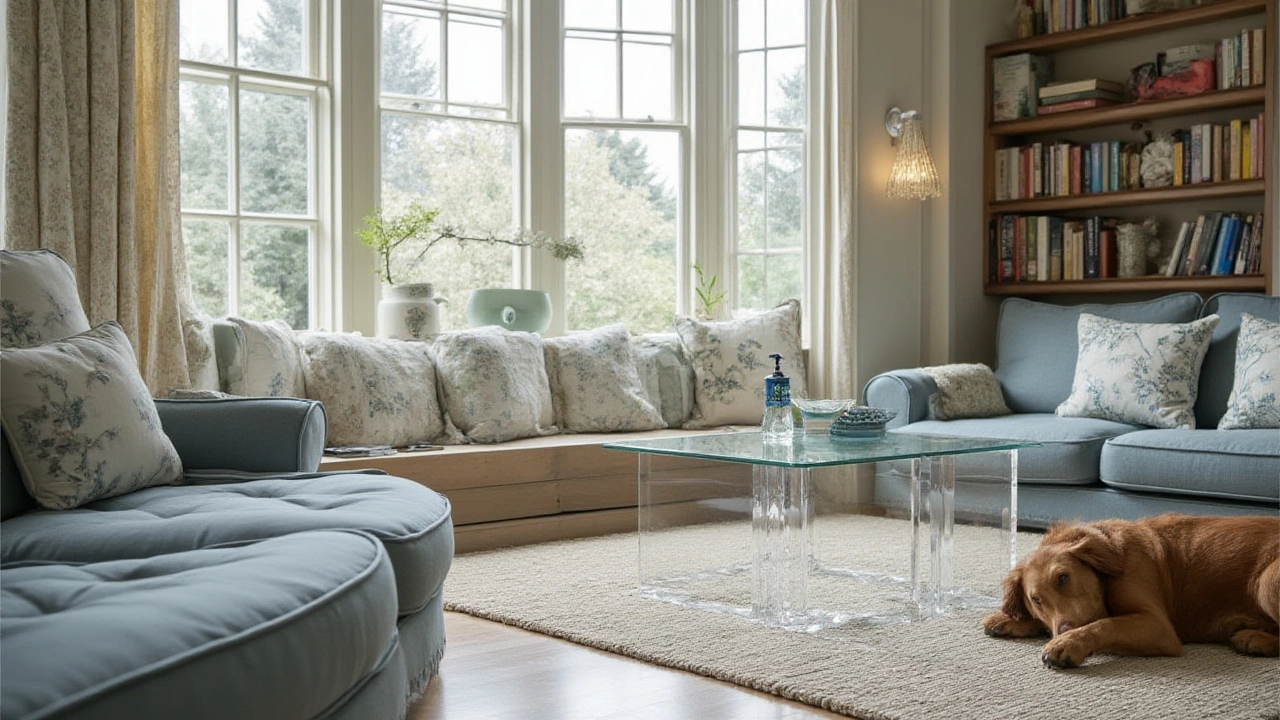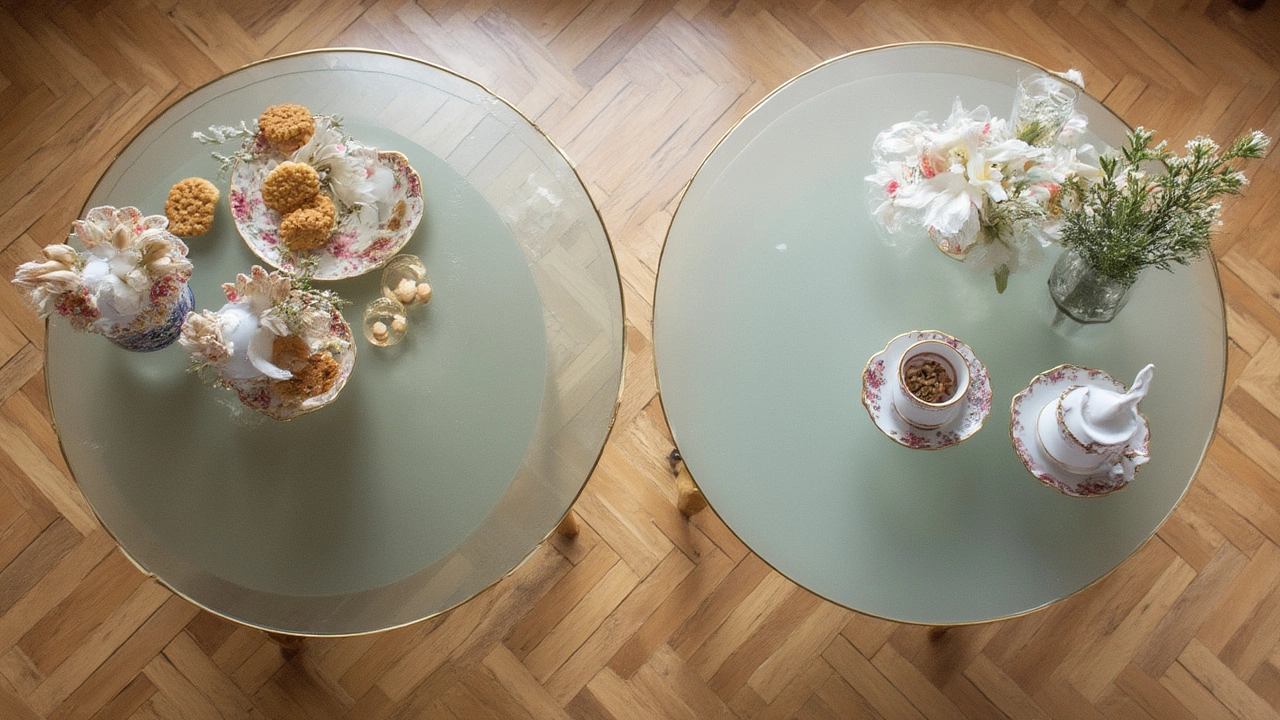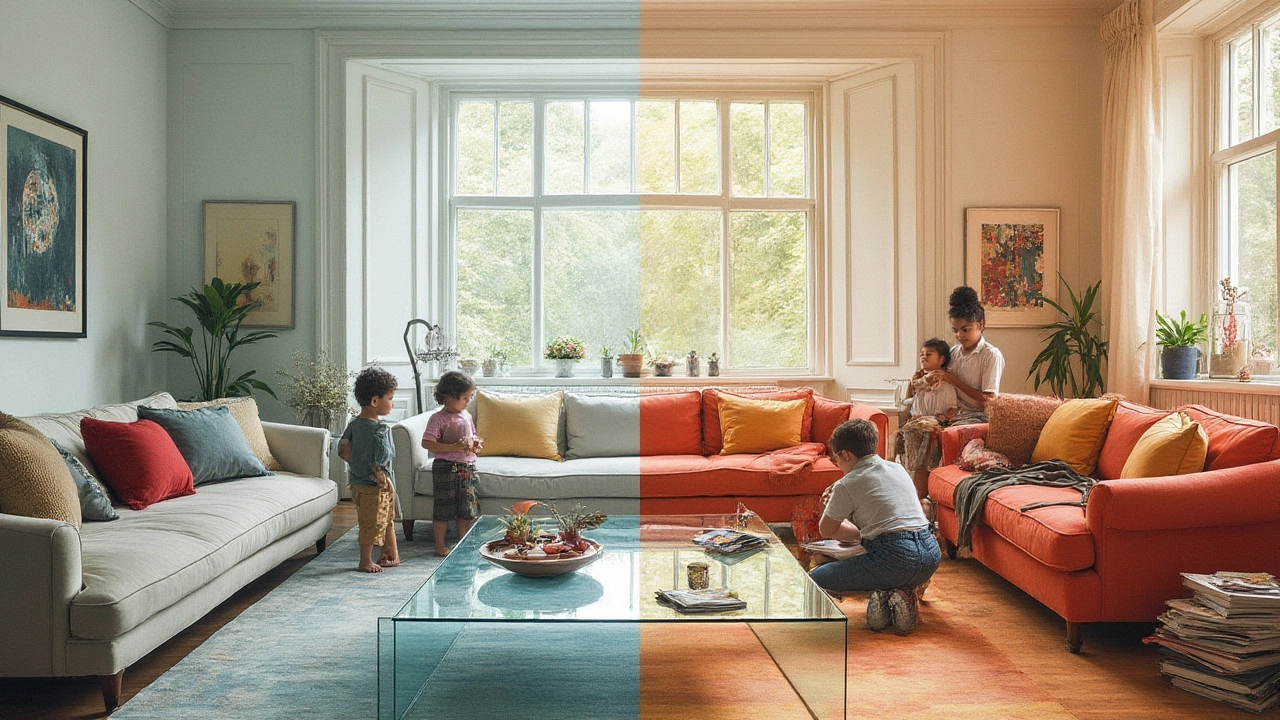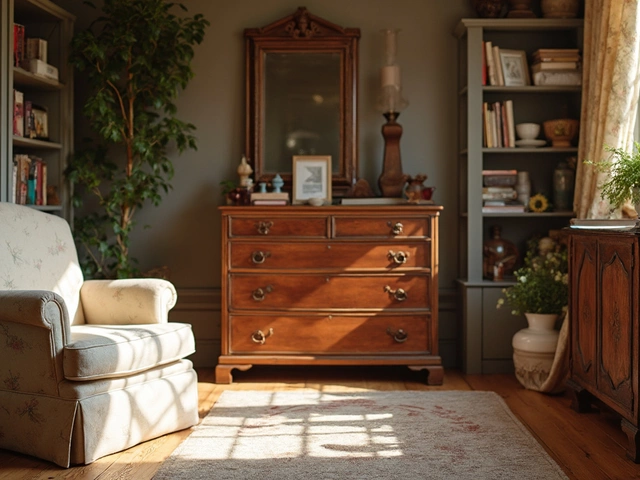 17
Jul,2025
17
Jul,2025
Ever sat in a living room and found your eyes glued to the coffee table, not even noticing the fancy sofa or artwork on the walls? That’s the power of a great table. But when faced with the choice between glass and acrylic, suddenly picking the right piece can feel like a mini home design crisis. Both bring a light, breezy vibe—perfect for making a room feel bigger or just showing off your shaggy rug underneath. Yet, beneath that modern sparkle, these materials couldn’t be more different when it comes to the mess, stress, and surprise moments they bring to daily life. It’s not just about looks—it’s about which option fits how you live, what you want to deal with, and, let’s be honest, what you’re willing to wipe fingerprints off of every other day.
The Look and Feel: First Impressions Matter
You know that moment you step into a showroom and the glass tables catch every ray of light, making the whole space feel bigger? That’s no accident. Glass coffee tables have a way of bouncing around ambient light, helping even cramped condos appear airier. In 2024, manufacturers are getting bolder—mixing frosted, smoked, or even etched glass into different shapes, so these tables aren’t just transparent rectangles anymore.
On the flip side, acrylic (sometimes sold as Lucite or Plexiglas) keeps up the illusion of “invisible furniture,” but adds a softer, almost syrupy clarity. Some folks swear by the way acrylic edges catch the light and come off as futuristic, while glass attracts with its crispness and cool touch. The truth is, acrylic coffee tables look almost identical to glass from a distance, but when you run your hand over one, you’ll notice the difference. Acrylic is warmer, lighter, and oddly pleasant to grip—it doesn’t give you those chills when your skin touches it first thing in the morning. Plus, acrylic can do curves and wild angles that would send glass running for cover. Designers love this for statement shapes, like those wild wavy tables or chunky waterfall edges all over Instagram right now.
Still, perfection has a price. Glass, especially if it’s tempered, will almost always look cleaner, since it resists scratches and maintains a sharp shine. Acrylic might start strong but even day-to-day use slowly brings dullness and small scratches. If you’re super into spotless, flawless surfaces, this might be the first thing that bugs you about acrylic. So, really ask yourself—do you want a museum piece, or something that just looks cool until your keys and coffee mugs have done their worst?
Strength, Durability, and Everyday Performance
Let’s get real—nobody buys a coffee table just to look at it. Sooner or later, it’s going to be a landing pad for laptops, pizza boxes, or the odd “oops, did the baby just bang that toy again?” This is where the real difference rolls in. Tempered glass coffee tables are surprisingly tough. Thanks to a heat treatment process, tempered glass resists shattering way more than the stuff you’d see in a window. If it does break, it crumbles into little pebbles instead of sharp shards, which, while still a pain, is a lot safer for bare feet or—worse—curious pets. You’ll usually find glass about 10-12 mm thick on a quality modern table, which can handle your daily stuff without a hint of warping.
Acrylic’s claim to fame is how it handles impact. Drop a hardcover book on it, and you might hear a dull thud, but there’s little risk of actual breakage. It’s 17 times tougher than standard glass when it comes to force—no joke, the same stuff is used for riot shields and airplane windows. And if you do manage to “crack” acrylic, it usually flexes rather than snaps. For homes with kids or clumsy adults, this is a big deal—you worry less about disaster during rough play or parties.
So who wins on the durability front? Well, check out this comparison table for a clearer breakdown:
| Feature | Glass Coffee Table | Acrylic Coffee Table |
|---|---|---|
| Scratch Resistance | High | Low |
| Impact Resistance | Moderate | Very High |
| Weight | Heavy | Light |
| Prone to Chipping | Yes | No |
If you’re the kind of person who moves their furniture around a lot—maybe you host game nights, or you just get that design itch every season—a lightweight acrylic table is far less trouble for rearranging. But, if you want something that plants itself and doesn’t budge, glass tables keep their position—accidentally ramming your knee into one won’t send it skidding across the floor. Just make sure you remember where the corners are; those can be sharper than you think on glass models.

Cleaning, Maintenance and Keeping It Fresh
I’ll be blunt—both glass and acrylic coffee tables are magnets for fingerprints. If you hate constant cleaning, you might need to make peace with smudges. That said, the approach to keeping each material fresh is very different. For glass, you can rely on the classic combo: a spritz of window cleaner and a microfiber cloth. Done right, and your glass will look brand-new for ages. Some newer glass tables come with nano-coatings that repel smudges or even resist smears from oily foods, so if you find one with this tech, scoop it up. One thing to watch out for with glass? Hard water spots and rings left by sweaty glasses. Coasters are your friend here.
Now, acrylic is fussier. Most acrylic tables scratch easily, so you can’t use rough paper towels, harsh chemicals, or even that scrubby side of your dish sponge. It’s always a soft cloth, maybe a little soapy warm water, and gentle circles to get the muck off. And still, that pesky “haze” can develop on older acrylic—the unavoidable cloudiness from little scratches piling up over the years. There are acrylic polishes out there designed for fixing these, but it means more steps and a bit more patience. It’s worth noting that acrylic doesn’t stain from coffee or red wine the way some porous surfaces might. If you spill, you can relax—just don’t let the gunk sit for hours.
Another wild fact: acrylic attracts dust because of its static charge. You move it, and you’ll notice a fine mist of fuzz drifting over like it’s calling pet hair from the next room. Anti-static sprays help, but if you have a shedding dog or cat, glass might drive you less crazy in the long run.
Style, Versatility, and Home Life Fit
The style war between glass and acrylic tables only gets more dramatic every year. Want a table that goes with any couch color, rug pattern, or wild plant collection? Both glass and acrylic deliver that clean, “look right through me” vibe, but little details will sway your experience.
Glass tables suit just about every style. If your place is sleek and modern, glass blends in without stealing the show, especially when paired with metal frames or minimalist wooden bases. If you’re into boho or vintage looks, glass can show off funky carpets or woven ottomans without hiding them under a bulky surface. What’s trending big now is smoked or colored glass—amber and green glass tables have leapt straight from ’70s designer catalogs into cool, urban apartments everywhere.
Acrylic, on the other hand, feels more daring. The material can be bent into wild U-shapes, C-legs, or even spirals—making for statement coffee tables that double as art. Because acrylic comes in lots of thicknesses and colors, you’ll see everything from total clear slabs to neon tints in influencer living rooms. It plays especially well with small spaces, because anything see-through tricks the eye into thinking a room is less crowded than it really is.
Both materials play nicely with sunlight, but acrylic’s UV-resistance varies. Cheap acrylic can yellow if it bakes in a sunny window for years, but high-end Lucite holds up much better. Glass doesn’t fade, so if your table loves basking in a sunbeam, glass is the reliable choice.
Have kids tearing around or pets zooming underfoot? Acrylic is your secret weapon—no worries about a flying toy sending shards across the floor. But glass wins hands-down if you want a timeless, grown-up feel and crisp lines. Yes, both look cool—just for different reasons. Need to land somewhere in the middle? Try acrylic-topped tables with wood or stone bases, or glass with beveled, rounded edges for safety and style.

Price, Value, and Making the Final Choice
Here’s where your wallet comes out to play. Glass coffee tables range wildly in price, mostly based on thickness, edge treatments, complexity, and brand. A basic rectangular glass table from a big box store might run under $150, while smoked glass or designer versions can climb up to $2,500 or more. Tempered glass always costs more, but for homes with kids, it pays off in peace of mind.
Acrylic tables, because of their manufacturing process and raw material costs, tend to be either super-affordable or weirdly pricey. You can snag a basic bent acrylic table for about $110, but a chunky Lucite designer piece can set you back well over $3,000, especially for larger or more intricate shapes. Don't forget about the little extras—a glass table usually comes pre-assembled, but many acrylic pieces are shipped flat and need a little elbow grease (or extra shipping fees).
One thing folks often overlook is long-term value. A quality glass coffee table can last decades if you don’t bash it with a hammer; scratches are rare, and cleaning is simple. Acrylic’s big draw is impact toughness, but it does cloud and scratch over time. If you’re someone who changes up your living room every year, acrylic makes sense—its lightness and lower upfront cost mean you won’t feel guilty trading up when trends change. But if you want an heirloom piece that stays crisp year after year, you’ll probably get better return-on-investment with glass.
So, which is better—glass or acrylic coffee table? It honestly depends who you are. Want timeless style, serious scratch resistance, and don’t mind a little extra weight? Glass rules. Need something kid-proof, curvy, or super lightweight? Acrylic all day. Either way, your coffee table will become more than just a place to toss remotes—it’s a centerpiece, a conversation starter, and, occasionally, a footrest when nobody’s looking.




